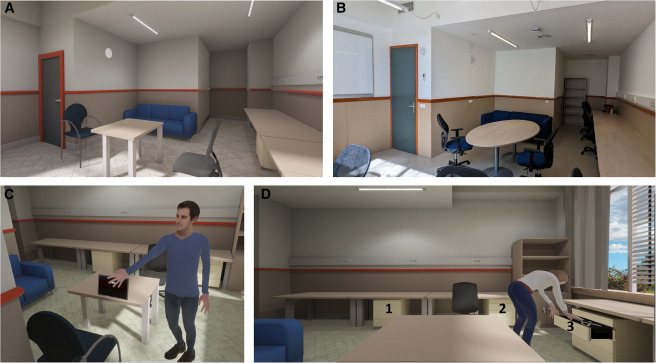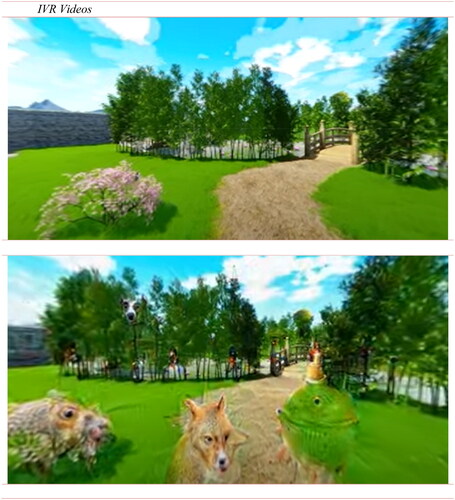Research Roundup (#26)
.png/:/rs=w:1440,h:1440)
Welcome...
Welcome to the twenty-sixth-ever Research Roundup! A now fortnightly catch-up on the latest developments in the field of XR research.
It’s been a busy couple of weeks, so let's not hang around.
The Fortnight in 3 (Sentences)
New research on child mental health explored the use of awe-inspiring VR experiences with war-affected displaced children, and positive mental imagery approaches for anxious youth.
Research looking at the psychological effects of VR investigated the possibility of reality blending, documented five canonical findings from three decades of VR experimentation, and explored how real-world friendships influence co-presence and social interactions.
And finally, research sought to advance technical innovation through exploring AR memory assistance systems, smartphone-based avatar creation, and reviewing different physiological approaches to measuring presence in virtual environments.
The Fortnight in 300ish (words)
The use of awe-inducing experiences is not quite the ‘killer app’ everyone is seeking but it is nevertheless something unique to the medium. Where else can you sit in space looking down at earth? It was therefore intriguing to read that awe-inducing experiences could be more effective than calming experiences, and neutral apps, in supporting the mental health of war-affected children. It was found, across two experiments with large samples, that a 12 minute VR exposure led to increased self-reports of hope, positive emotions and meaning of life with reduced state anxiety and negative emotions. Although limited to a specific context, and no long-term follow-ups, this has intriguing possibilities if the results do generalise.

Speaking of results that will be intriguing if they generalise, researchers from the University of Barcelona have reported on participants blurring the lines between reality and virtual reality. Participants in their study completed an implicit attitudes measure, about climate change, before interacting with a virtual interviewer in an environment modelled on a real room, and then completing the attitude measure again. The second part of the study involved a follow-up with a real person in the actual room a week later. The study explored different hypotheses, but the one that caught the eye was the location of a virtual tablet. In the first session the virtual interviewer took the tablet from a drawer in the room and used it to ask questions about simulator sickness. In session two the real experimenter pretended to not know where the tablet had gone. 45% of the participants suggested it was in the drawer, assuming reality and virtual reality matched in this way. Previous research has shown intentional transfer of knowledge to the real world, such as training or therapy, but evidence of unintentional and incidental transfer of this kind is somewhat fascinating/intriguing/worrying/disturbing (delete as appropriate).
And finally, researchers in Paris have provided a rather handy review of 94 articles trying to identify physiological correlates of presence. You may already be aware that this is something of a ‘mixed bag’ confounded by the multiple correlates of physiological responses (e.g. increased heart rate, or indeed brain activity, can mean many different things). This is clearly acknowledged alongside the idea that physiological responses can be highly individual. Does this make the whole enterprise slightly pointless? It's difficult to say, but it does feel that way. At least the pursuit of a ‘pure‘ measure.
Paper of the Fortnight
The paper of the fortnight, this fortnight, goes to accumulating evidence on the benefits of ‘cyberdelics’: all the sensory fun of psychedelics but without the physical side effects.The research specifically investigated if psychedelic-style visual hallucinations could affect emotional and autonomic responses, as well as promote cognitive flexibility.
When in the control condition participants experienced the ‘Secret Garden’, a 360 video of a Japanese garden that has previously been shown to reduce anxiety and stress. In the experimental condition participants experienced the same video but with added visual hallucinations. Participants completed both conditions in a counter-balanced way.

Comparisons between pre- and post-measures indicated enhanced cognitive flexibility and inhibitory control after the hallucinatory experience, replicating previously reported findings (which is always a good thing). Both video types also reduced state anxiety and heart rate.
With the issue of generalisability hanging over so many findings it's great to see successful replications like this that also extend the findings (in this case to the emotional and physiological measures). With divergent thinking and inhibitory control important in so many workplace situations it presents an intriguing possibility for ‘opening up the box’ in a safe (and legal) way.
I'm not entirely sure if this counts as ‘VR for good’ but it may fall into ‘VR for good productivity’. If you're like me then you'll be off to have some virtual hallucinations before your next big brain-storming session. Back in two weeks.